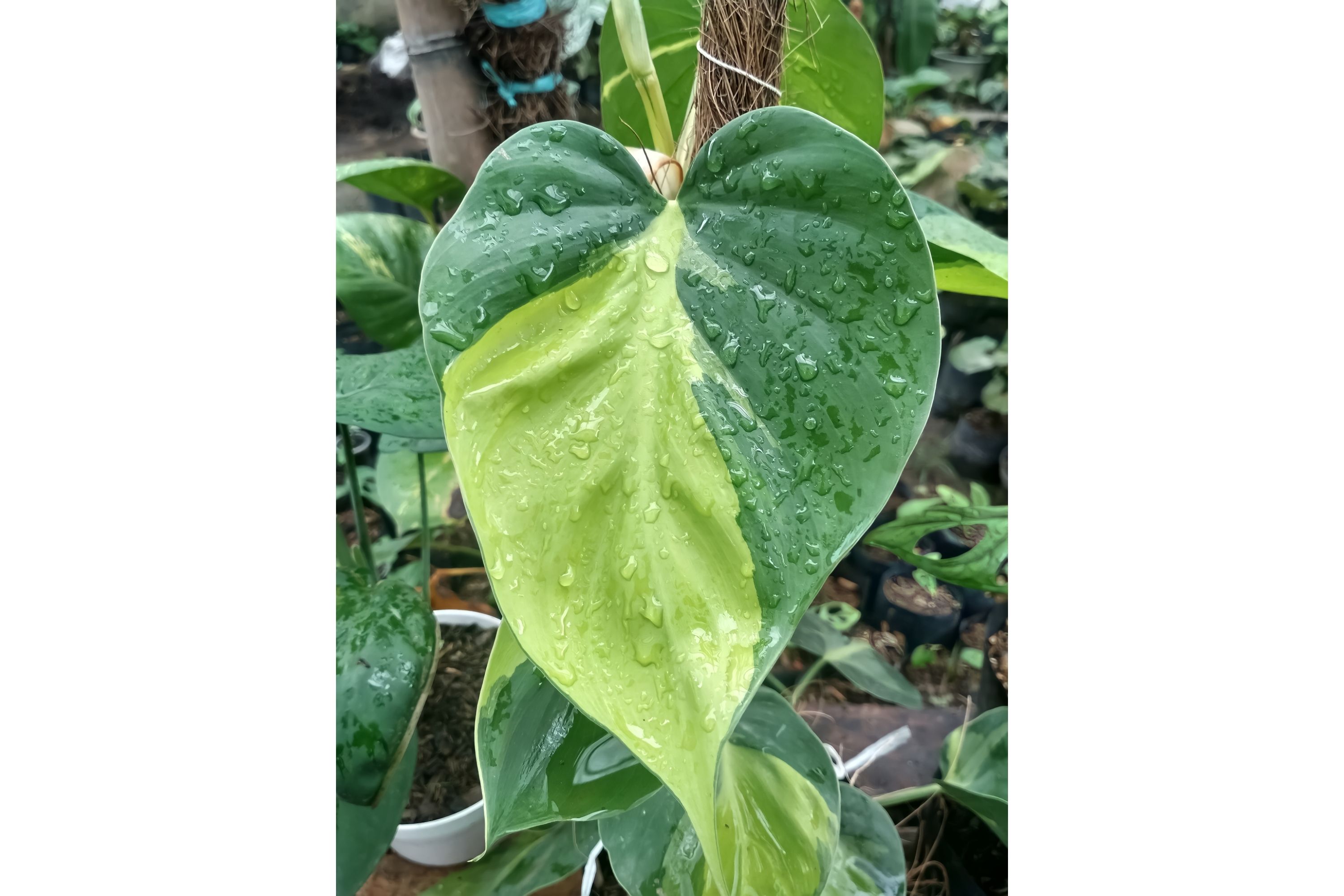Heartleaf philodendron
(Philodendron hederaceum)

Description
Philodendron hederaceum is a species of evergreen vine in the family Araceae, native to Central and South America. This beautiful plant is known for its heart-shaped leaves and trailing growth habit, making it a popular choice for both indoor and outdoor gardening. In this article, we'll take a closer look at Philodendron hederaceum, including its history, taxonomy, morphology, and care requirements. History and Taxonomy Philodendron hederaceum was first described by German botanist Heinrich Wilhelm Schott in 1831. The name "hederaceum" comes from the Latin word "hedera," which means ivy, in reference to the plant's trailing habit. The plant is also commonly known as the Sweetheart Plant, Heart-Leaf Philodendron, or simply Philodendron. In the past, Philodendron hederaceum was classified under the species Philodendron scandens, but in recent years, it has been recognized as a distinct species due to its distinct morphological characteristics. Morphology Philodendron hederaceum has a relatively simple morphology, consisting of a vine with elongated internodes that allows it to climb trees or other vertical surfaces. The plant can grow up to 10 feet in length, though its growth can be controlled with proper pruning. The leaves of Philodendron hederaceum are its most distinctive feature, measuring 2 to 4 inches long and 2 to 3 inches wide. They are heart-shaped with a glossy texture and come in various shades of green. The plant produces aerial roots from its nodes, which help it climb and anchor itself to its support. In addition to its attractive foliage, Philodendron hederaceum also produces small, inconspicuous flowers that bloom in the summer. The plant is generally considered non-toxic to humans and pets, though its sap can cause skin irritation in some individuals. Cultivation Philodendron hederaceum is an easy-to-grow plant that thrives in a variety of conditions. It prefers bright, indirect light but can tolerate low light conditions as well. The plant does best in well-draining soil that is kept consistently moist but not waterlogged. It can be propagated through stem cuttings, which should be taken from the plant's nodes and allowed to root in water or soil. Philodendron hederaceum is a tropical plant and does well in warm, humid environments. It can be grown outdoors in USDA hardiness zones 11 and above, but is typically grown as a houseplant in colder regions. When grown indoors, the plant benefits from occasional misting and regular fertilization during the growing season. Benefits Philodendron hederaceum, also known as the heart-leaf philodendron, is a popular indoor plant with several benefits. Some of these benefits include: Air purifying: Like many other indoor plants, Philodendron hederaceum is an excellent air purifier. It can help remove pollutants such as formaldehyde, benzene, and xylene from the air. Easy to care for: Philodendron hederaceum is a low-maintenance plant that is easy to care for, making it an excellent choice for beginners or people with busy lifestyles. Aesthetic appeal: Philodendron hederaceum has attractive heart-shaped leaves that come in various shades of green, making it a popular choice for indoor decoration. Health benefits: Studies have shown that having plants in your home or workspace can have positive effects on mental health, including reducing stress levels and improving mood. Versatile: Philodendron hederaceum is a versatile plant that can be grown in a variety of conditions, including low-light environments, making it suitable for almost any indoor space. Conclusion Philodendron hederaceum is a beautiful and easy-to-care-for plant that adds a touch of tropical elegance to any home or garden. Whether grown indoors or out, the Sweetheart Plant's heart-shaped leaves and trailing habit make it a stunning addition to any space. With proper care and attention, Philodendron hederaceum can provide years of enjoyment and beauty for plant enthusiasts of all levels.
Taxonomic tree:







